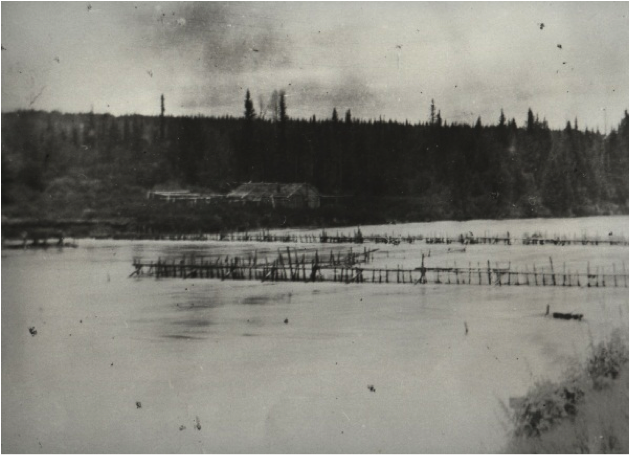The Barricades are Removed, October 1904
The first round of the several year dispute that led up to the creation of the Lake Babine Barricade treaty happened in October of 1904, although it had been building for some time. As more canneries were opened on the lower Skeena River the government was under increased pressure to do something about declining salmon stocks. The canneries were pointing the finger at the First Nations fisheries up the Skeena, especially at Babine Lake. October of 1904 saw the fishery officer Hans Helgesen making his way up the Skeena River to inspect the Babine fishery. He located the fishery centred on two major fish weirs several miles down the Babine River. Helgesen noted how efficient the weirs were for capturing salmon, but failed to realize that the Babine had a system to allow many salmon through the weir to spawn and keep the stock healthy and stable. Helgesen spoke with Chief Atio and informed the Chief that the new fisheries regulations meant that the weirs had to be destroyed. Atio responded that the Babine had a right to fish this river and had done so for generations. Helgesen had to resort to threatening to send the men to jail to force them to take the weirs apart. Later, during a meeting, the Babine insisted on receiving compensation for the work they did taking down the weir, and so that they could provide for their families. Helgesen agreed to pay them $600.00 for taking down the weir, provide rations for widows and orphans, and give everyone nets to fish with.




